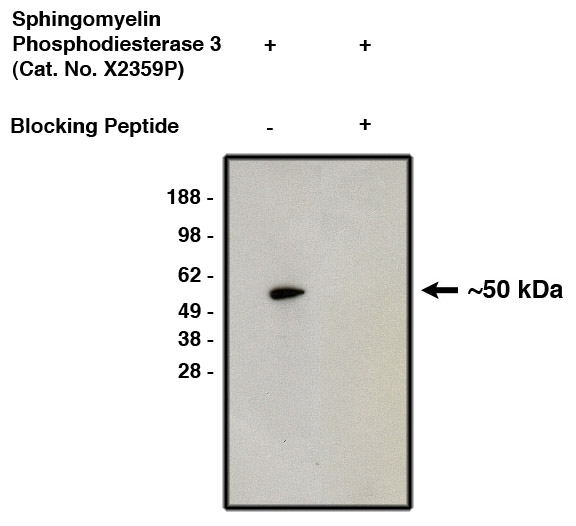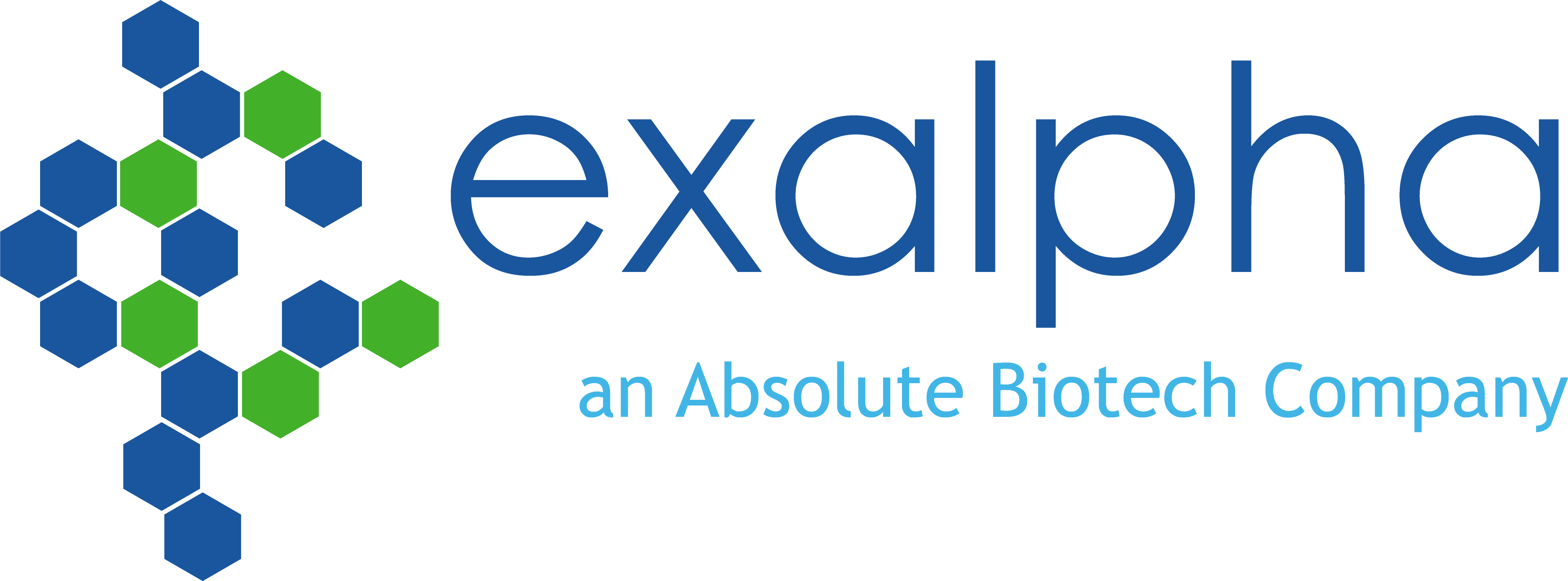Catalogue

Rabbit anti Human Sphingomyelin Phosphodiesterase 3
Catalog number: X2359P$319.00
Add To Cart| Product Type |
Antigen Immunoaffinity Purified Polyclonal |
| Units | 100 µg |
| Host | Rabbit |
| Species Reactivity |
Human |
| Application |
Western Blotting |
Background
Sphingomyelin phosphodiesterase 3 catalyzes the hydrolysis of sphingomyelin to form ceramide and phosphocholine. Ceramide mediates numerous cellular functions, such as apoptosis and growth arrest, and is capable of regulating these two cellular events independently. It also hydrolyzes sphingosylphosphocholine. Sphingomyelin phosphodiesterase 3 regulates the cell cycle by acting as a growth suppressor in confluent cells. It likely acts as a regulator of postnatal development and participates in bone and dentin mineralization. It is activated by unsaturated fatty acids and phosphatidylserine. it is predominantly expressed in the brain.
Synonyms: nSMase2; Neutral sphingomyelinase 2; EC 3.1.4.12
Source
Immunogen: Synthetic peptide derived from human sphingomyelin phosphodiesterase 3
Product
Product Form: Affinity Purified
Formulation: Provided as solution in phosphate buffered saline with 0.08% sodium azide
Purification Method: Antigen Immunoaffiinity Purification
Concentration: Lot specific, see vial
Applications
Antibody can be used for Western blotting (1:400 starting dilution). Optimal concentration should be evaluated by serial dilutions. Protein appears to run lower than expected protein molecular weight. However, antibody is specific for the protein and band blocks when blocking peptide used.
Functional Analysis: Western Blotting
Positive Control: Predominantly expressed in the brain.
Storage
Product should be stored at -20°C. Aliquot to avoid freeze/thaw cycles
Product Stability: See expiration date on vial
Shipping Conditions: Ship at ambient temperature, freeze upon arrival
Caution
This product is intended FOR RESEARCH USE ONLY, and FOR TESTS IN VITRO, not for use in diagnostic or therapeutic procedures involving humans or animals. It may contain hazardous ingredients. Please refer to the Safety Data Sheets (SDS) for additional information and proper handling procedures. Dispose product remainders according to local regulations.This datasheet is as accurate as reasonably achievable, but our company accepts no liability for any inaccuracies or omissions in this information.
References
1. Hofmann, K., et al. Cloning and characterization of the mammalian brain-specific, Mg2+-dependent neutral sphingomyelinase.; Proc. Natl. Acad. Sci. U.S.A. 97:5895-5900(2000).
2. Miura, Y., et al. Hydrolysis of sphingosylphosphocholine by neutral sphingomyelinases.; FEBS Lett. 557:288-292(2004).
3. Marchesini, N., et al. Role for mammalian neutral sphingomyelinase 2 in confluence-induced growth arrest of MCF7 cells.; J. Biol. Chem. 279:25101-25111(2004).
Protein Reference(s)
Database Name: UniProt
Accession Number: Q9NY59 (Human)
Species Accession: Human
Safety Datasheet(s) for this product:
| EA_Sodium Azide |

" Western blot using affinity purified nSMase2 antibody (Cat. No. X2359P) on human brain lysate (Cat. No. X1633C). Antibody without (lane 1) or with (lane 2) blocking peptide. Visualized using mouse anti-rabbit HRP conjugated (Cat. No. X1207M) at 1:200K dilution)."
